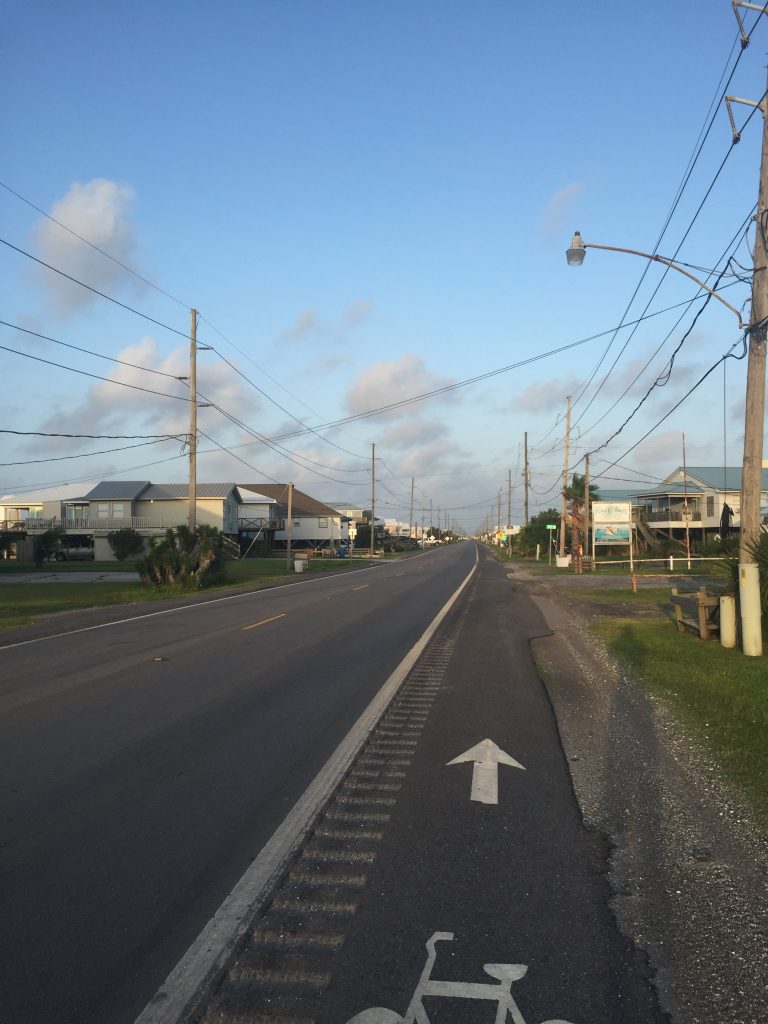 A recent medical malpractice lawsuit stemming from a surgery performed at West Jefferson Medical Center defines your right to make an informed decision about the course of treatment you wish to take. The patient in this case suffered from heavy menstrual bleeding primarily resulting from fibrin tumors in her uterus. A General Practitioner previously prescribed the patient Depo-Provera, a steroid injection that alters hormone levels associated with the menstrual cycle. The prescription had little effect treating the symptoms and caused the patient to gain over twenty-five pounds. Unhappy with the treatment, the patient consulted her OBGYN, who recommended a hysterectomy to completely remove the tumored uterus. The OBGYN recommended the operation two more times before the patient consented to the surgery, over two years after the initial consultation. Unfortunately for everyone involved, the patient’s bowel was perforated during the surgery. The patient subsequently sued, claiming that the OBGYN failed to inform her of all the potential treatment options before the operation and that she would never have gone through with the operation had she known of less risky treatments.
A recent medical malpractice lawsuit stemming from a surgery performed at West Jefferson Medical Center defines your right to make an informed decision about the course of treatment you wish to take. The patient in this case suffered from heavy menstrual bleeding primarily resulting from fibrin tumors in her uterus. A General Practitioner previously prescribed the patient Depo-Provera, a steroid injection that alters hormone levels associated with the menstrual cycle. The prescription had little effect treating the symptoms and caused the patient to gain over twenty-five pounds. Unhappy with the treatment, the patient consulted her OBGYN, who recommended a hysterectomy to completely remove the tumored uterus. The OBGYN recommended the operation two more times before the patient consented to the surgery, over two years after the initial consultation. Unfortunately for everyone involved, the patient’s bowel was perforated during the surgery. The patient subsequently sued, claiming that the OBGYN failed to inform her of all the potential treatment options before the operation and that she would never have gone through with the operation had she known of less risky treatments.
The doctrine of informed consent protects a patient’s right to choose which therapeutic or surgical treatment to pursue by requiring doctors to provide the patient with the information needed for that decision. Exactly what information the doctor must disclose is the primary issue in this case. The patient contends that all information pertaining to the associated risk and any potential treatment options should be disclosed while the doctors believe they must disclose only those risk and options that are feasible or appropriate given the patient’s unique circumstances. The law favors the doctors. In 2013, the Supreme Court of Louisiana, when faced with a similar question, decided that doctors must provide sufficient information and disclose reasonable alternatives rather than all information or all alternatives. See Snider v. La. Med. Mut. Ins. Co., 130 So. 3d 922 (La. 2013). What constitutes “sufficient” information and “reasonable” alternatives changes depending largely on the medical history of the patient. The doctor is given some discretion determining what is reasonable and sufficient, but he or she must adhere to the standard of the profession. The doctor must do what most other doctors would have done in the same situation.
In this case, the OBGYN told the patient that her options were limited to a hysterectomy, a mastectomy, or continued injections of Depo-Provera. She also told the patient that, as with any hysterectomy, there was a risk of bowel perforation during the surgery. The patient signed an informed consent form stating that she was aware of the options and the risks; however, a couple of months after the surgery, and after the perforated bowel, the patient found an article published by the American Congress of Obstetricians and Gynecologists (ACOG article) that listed options beyond those disclosed by OBGYN. One option in particular, Lupron, was an injection that has been shown to reduce the size of fibrin tumors. In her suit, the patient specifically claims that had she known of Lupron, she would not have needed nor consented to a hysterectomy and that the OBGYN was liable for her injury for failing to inform her of the option.
 Louisiana Personal Injury Lawyer Blog
Louisiana Personal Injury Lawyer Blog


 Many people have nightmares of falling and nobody being there to catch them. For Tommie Hebert, that nightmare became a reality when he fell from a moving helicopter, landing directly on his back, causing severe injuries such as a broken back and a damaged hip that would likely require replacement. To make matters worse, the company he worked for, Industrial, was not there to catch him.
Many people have nightmares of falling and nobody being there to catch them. For Tommie Hebert, that nightmare became a reality when he fell from a moving helicopter, landing directly on his back, causing severe injuries such as a broken back and a damaged hip that would likely require replacement. To make matters worse, the company he worked for, Industrial, was not there to catch him. If you are injured while at work, there are many paths that you may take for financial relief. The path that you choose along with how you navigate that path will be a decision that will affect you for the rest of your life. The following case out of Tangipahoa parish demonstrates why it is necessary in workers compensation cases to comply with certain orders and if you don’t why objections to rulings based on your lack of responses will not be considered.
If you are injured while at work, there are many paths that you may take for financial relief. The path that you choose along with how you navigate that path will be a decision that will affect you for the rest of your life. The following case out of Tangipahoa parish demonstrates why it is necessary in workers compensation cases to comply with certain orders and if you don’t why objections to rulings based on your lack of responses will not be considered. It seems an insurance company’s first response to a claim is to deny the claim. The Louisiana Workers’ Compensation Corporation (“LWCC”) is no exception. The following case out of Loreauville Louisiana demonstrates the arguments that can be made and standards to assess whether an injured employee is due LWCC’s benefits or benefits as a longshoreman.
It seems an insurance company’s first response to a claim is to deny the claim. The Louisiana Workers’ Compensation Corporation (“LWCC”) is no exception. The following case out of Loreauville Louisiana demonstrates the arguments that can be made and standards to assess whether an injured employee is due LWCC’s benefits or benefits as a longshoreman. When one is injured by the actions of another, it is hard to consider all of the moving parts inside and outside of a lawsuit designed to make the injured person whole again. Past medical bills after an accident may come back to haunt someone who has been injured after they have won their personal injury lawsuit.
When one is injured by the actions of another, it is hard to consider all of the moving parts inside and outside of a lawsuit designed to make the injured person whole again. Past medical bills after an accident may come back to haunt someone who has been injured after they have won their personal injury lawsuit. With all of the advances in the field of medicine these days most people would probably think that a surgery to remove a person’s gallbladder would be considered fairly routine. However, when it comes to surgery, nothing can be taken for granted. A Louisiana resident, Richard Logan, and his doctor found this out the hard way during a surgery that was performed in August of 2010. That was when Mr. Logan underwent surgery to have his gallbladder removed, but the surgery was anything but routine.
With all of the advances in the field of medicine these days most people would probably think that a surgery to remove a person’s gallbladder would be considered fairly routine. However, when it comes to surgery, nothing can be taken for granted. A Louisiana resident, Richard Logan, and his doctor found this out the hard way during a surgery that was performed in August of 2010. That was when Mr. Logan underwent surgery to have his gallbladder removed, but the surgery was anything but routine. People trust doctors and hospitals to take care of their health issues.
People trust doctors and hospitals to take care of their health issues. Plaintiff Richard Reynolds sustained injuries in a multi-vehicle accident on March 15, 2008, in St. Tammany Parish. Reynolds alleged, amongst other counts, that his insurer, Automobile Club Inter-Insurance Exchange (ACE) and Insurance Auto Auctions Corporation (IA) failed to preserve Reynolds’ vehicle for inspection purposes to determine whether any defects existed, despite being put on notice of the need for preservation. ACE and IA defended themselves by stating there was “no cause of action” for what Reynolds was attempting to sue for, and the Supreme Court of Louisiana granted certiorari, or an order to review the decision of the lower court, to definitively rule on the viability of negligent spoliation of evidence as a cause of action in Louisiana.
Plaintiff Richard Reynolds sustained injuries in a multi-vehicle accident on March 15, 2008, in St. Tammany Parish. Reynolds alleged, amongst other counts, that his insurer, Automobile Club Inter-Insurance Exchange (ACE) and Insurance Auto Auctions Corporation (IA) failed to preserve Reynolds’ vehicle for inspection purposes to determine whether any defects existed, despite being put on notice of the need for preservation. ACE and IA defended themselves by stating there was “no cause of action” for what Reynolds was attempting to sue for, and the Supreme Court of Louisiana granted certiorari, or an order to review the decision of the lower court, to definitively rule on the viability of negligent spoliation of evidence as a cause of action in Louisiana. 
 Karen and Joe LeBlanc brought a medical malpractice action against Dr. Rezaul Islam. A medical malpractice claim is a specific type of negligence claim in which the plaintiff alleges that a doctor or medical professional failed to act with the level of care they are duty-bound to provide, and that the plaintiff was harmed by the failure.
Karen and Joe LeBlanc brought a medical malpractice action against Dr. Rezaul Islam. A medical malpractice claim is a specific type of negligence claim in which the plaintiff alleges that a doctor or medical professional failed to act with the level of care they are duty-bound to provide, and that the plaintiff was harmed by the failure.